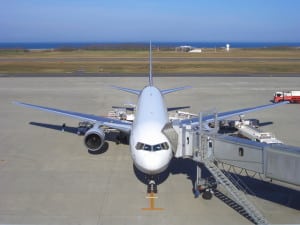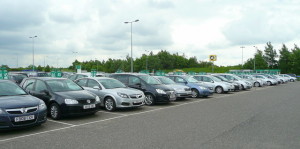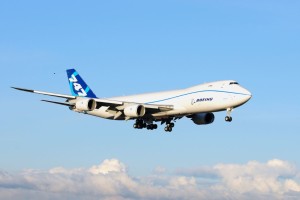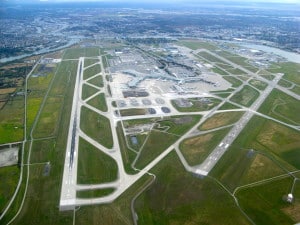It’s a reality that for some people in the US, a road trip to and from Alaska could reach 12,000 miles or more. Averaging a grueling and unenjoyable 500+ miles a day, it could take you a month to make the trip without stopping for a single moment of enjoyment. If you’re short on time, your best bet is to fly in directly to Alaska and figure out some adventure from there. If you want to experience the authentic last best road trip, however, this shouldn’t suit you well. There’s nothing stopping you from paying for a bit of extra baggage to get your camping gear on the airplane with you, or even shipping it ahead of you by common carrier.
Flight Information:
 You have a few options that you could consider. You might want to fly all the way up to the state and set out on your expedition that way. Certainly, this will jump-start your adventure and get you where you to Alaska as quickly as possible. Another option worth considering is to fly closer to the Canadian border (Washington, Idaho or possibly Montana) and then rent a vehicle for a proper road trip up north. The latter is probably the best concession as you can easily make the trek there and back in a two-week time frame, with bit more time for exploration. Another option might be to fly or drive to a ferry port, get up into Alaska by boat, and carry on your adventure that way.
You have a few options that you could consider. You might want to fly all the way up to the state and set out on your expedition that way. Certainly, this will jump-start your adventure and get you where you to Alaska as quickly as possible. Another option worth considering is to fly closer to the Canadian border (Washington, Idaho or possibly Montana) and then rent a vehicle for a proper road trip up north. The latter is probably the best concession as you can easily make the trek there and back in a two-week time frame, with bit more time for exploration. Another option might be to fly or drive to a ferry port, get up into Alaska by boat, and carry on your adventure that way.
As for some recommendations, if you follow some of our preparedness guides, you can get your camping gear extremely mobile and ready for a baggage check. Yes, you’ll probably have to pay the airlines to check those extra bags but it’s still likely cheaper than sending your gear via common carrier. A flight shouldn’t necessarily be an obstacle to whether you can or should tent it out there. Even if you spend an extra $500 (excessive estimate) sending your baggage to and from Alaska, you’re still going to save a heap of money compared to hotels/cabins, an RV rental or even hostels.
To truly assess whether this is right for you, you should consider the costs involved with airfare, extra baggage, vehicle rental, other incidental expenses and the time it’s really saving you. All of those things will add up to a value and you should assess whether the savings is worth the time and driving expenses it saves you.
Car Rentals:
 Just as within the mainland US, car rentals are a possible option in Alaska. Many of the common providers are available in the larger cities, a likely destination you would fly into. Each rental company features its own rates, terms as well as many other details and we’re not going to recommend a specific company over another. Generally speaking, longer term rentals tend to result in better rates and most companies also run many promotions for bundles, free upgrades and other money-saving opportunities.
Just as within the mainland US, car rentals are a possible option in Alaska. Many of the common providers are available in the larger cities, a likely destination you would fly into. Each rental company features its own rates, terms as well as many other details and we’re not going to recommend a specific company over another. Generally speaking, longer term rentals tend to result in better rates and most companies also run many promotions for bundles, free upgrades and other money-saving opportunities.
There are some things to keep in mind about rentals. If you intend to do a lot of exploration, therefore incur a lot of mileage, remember that not all companies offer unlimited mileage. Many charge over a certain amount of miles, based on your rental term, and additional miles are billed beyond the offered amount. This is important, even for a short-term, whirlwind trip around the state. Especially if you’re considering making the drive from mainland US to Alaska! This alone could often be cost prohibitive for some, so it’s certainly an important thing to check. As of our investigation into this option, there still are a handful of companies that still offer truly free unlimited mileage.
Another, most important consideration if you plan to go through Canada, is whether the rental car company will allow this. Many have policies about international travel and specifically prohibit the entry of their rentals into Canada. This is not something you want to mess around with as it could cost you far more than you expect and could wholly ruin your trip if you get caught violating a policy. Many companies, however, do not take issue with this and will permit travel through Canada. It might be wise to mention your intent and get a written letter of authorization, in the event there are any troubles with customs or law enforcement along the way.
If you intend to fly into Canada and make a partial trek, be sure to check the same things mentioned above about traveling into Alaska. You can’t just assume here that you can do whatever you like. Car rental companies are generally a bit more restrictive than your average RV rental place, but then again, car rental costs are much less compared to an RV which would knowledgeably incur significant mileage.
One other thing to be aware of is that longer term rentals can often times save you money. For example, if you’re planning a three-week trek, it might be worthwhile to look at monthly rates for your vehicle rental. This can often times be equal to or even less than the shorter term rate. You don’t “have” to use the extra time if you don’t want, but you might also appreciate a little bit of flexibility in your itinerary as well.
Lastly, be aware of the airport taxes. Most car rental companies within or around an airport have higher rates and fees. Much higher. It pays to check whether your preferred car rental company has any non-airport locations in your preferred rental city and if possible, check rates for that location. Often times this can save you hundreds of dollars on a long-term vehicle rental, so it’s well worth any inconvenience of taking a shuttle or taxi to an alternate destination.
Where To Fly?
 We don’t feel it’s right to spell this out for you, as there are many options and it’s really up to you.
We don’t feel it’s right to spell this out for you, as there are many options and it’s really up to you.
If you’re looking to make the full trek by land, good options to start in might be Seattle or Bellingham, Washington or perhaps Spokane, Washington. If you’re seeking a true Alaska Highway run, Kalispell, MT might be a good choice since it features a higher number of flights for Glacier National Park visits. If it were me, I would choose a starting point that allows me the route I’d want to take, costs the least amount of money and requires the least number of transfers for you to fly into. As you get into more rural airports, you will pay a rural “tax” if you will, simply because the airport doesn’t feature as many flights and is slightly more costly to operate.
If you’re looking for a partial trek, your options might include Vancouver, BC, Calgary, AB or Edmonton, AB. Vancouver would be a good place for a Cassiar route, whereas Calgary or Edmonton might be a better option for an authentic Alaska Highway run. All of these would allow you the full experience of a trip to Alaska without missing much at all. It all depends on how full featured you want your trip to be and whether international car rentals would be a problem.
If you want to get a flight to Alaska, Anchorage would be the cheapest destination. You can certainly consider other options, such as Fairbanks or even more rural destinations, however, the costs associated with the flight will increase quickly. Anchorage is in a very accessible part of the state and you could likely visit most common destinations within a day’s drive. This is likely the easiest of all the options since you’ll have many vehicle rental options and no complications that come from long distance car rentals.
Other Tips:
 As mentioned above, the typical relationship of airports and costs will relate to how many flights the airport handles as well as general proximity. In most cases, the cost of a car rental and fuel will likely nullify any vast distances that you’re trying to save here, though. What we’re saying is that if it’s cheap for you to fly to Seattle, but you want to take the Alaska Highway route, it will likely cost you less to fly to Kalispell, Montana since you’ll have over 500 miles of driving to get between those two locations.
As mentioned above, the typical relationship of airports and costs will relate to how many flights the airport handles as well as general proximity. In most cases, the cost of a car rental and fuel will likely nullify any vast distances that you’re trying to save here, though. What we’re saying is that if it’s cheap for you to fly to Seattle, but you want to take the Alaska Highway route, it will likely cost you less to fly to Kalispell, Montana since you’ll have over 500 miles of driving to get between those two locations.
You might be able to arrange flying into one destination and out of another. If you’re relying on a car rental, remember, this can often increase your overall rate significantly and it might be a better option to just plan on making up the extra mileage somehow. This can also be less cost effective on the flights in and out as well, so consider the option carefully.
When you’re planning your flight out, it would be suggested to put it at least one day behind when you’re actually planning to arrive to your return city. It can be really difficult to plan these vast distances and the last thing you want to be doing is spending your last day of vacation trying to make up 800 driving miles as this could be really miserable. You also just need to be aware of your destination on your return trek, and you should have a fairly decent handle on what you’re capable of at that point since you’ll have spent many days traveling from point to point.
